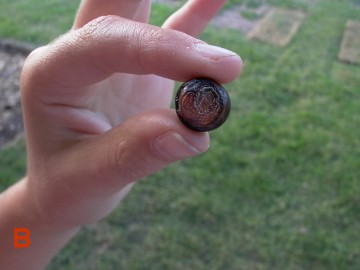Pests & Diseases » Anthracnose Fruit Rot


Fruit Rot in Olives
Fruit rot in ripening olives can be a serious problem in various growing regions throughout Australia. It can be caused by a number of different factors, including fungal infection, nutritional deficiencies and adverse environmental conditions. These can act singly or as a complex to cause serious disease problems.
Anthracnose
When fruit rot is caused by the fungal pathogen Colletotrichum (also known in its sexual form as Glomerella) the disease in referred to as Anthracnose. The word Anthracnose means “coal-like disease”. It is a broad term that is used to describe a number of disease problems that result in fruit rot and/or black spots on various horticultural crops. Colletotrichum is a very common fungus that is widespread in horticultural regions.
Olive fruit usually becomes susceptible to the fungus under warm, humid conditions during summer as the fruit begins to develop and ripen. Under the presence of moisture the spores of the fungus germinate on the surface of the fruit and invade the internal tissue. The infected fruit will rot and sometimes shrivel before prematurely dropping from the tree (Photo A).
Anthracnose is a latent disease. This means that the fungus can infect the fruit when the environmental conditions are suitable but will remain dormant until the fruit begins to ripen. Colletotrichum can usually be identified by the pink/orange spores that develop on the surface of the rotting fruit (Photo B). The spores are spread by insects, wind and water.
The main method used to control Anthracnose in olives is to apply a preventative spray of copper oxychloride to the fruit and the foliage. In areas where disease pressure is high, regular copper sprays every 6-8 weeks throughout the growing season may be required. Spray applications should start when the fruit is around pea size and continue up to around 3 weeks prior to harvest.
Pruning the trees to improve airflow and light penetration into the canopy will also help minimise infection. Generally the disease is more problematic in areas that experience high humidity and summer rainfall but it can also occur in dry summer regions.
Copper sprays act only as a preventive treatment and must be applied to the trees before the fungus has the chance to penetrate the fruit. Sprays will not help cure infected fruit but they will help to stop the spread of the disease through the grove.
An off label permit for the fungicide Amistar was available for controlling Anthracnose in olives in some states last year. Amistar is derived from naturally occurring compounds called strobilurins that are found in certain types of mushrooms. Amistar is an systemic fungicide that has both preventative and curative properties.
To check whether a permit is still available for Amistar, contact the Australian Olive Association or your local agricultural supplier. Other fungicides that are used on other crops but are not registered for olives include: Octave, Mancozeb, and Bravo.
Pesticide registrations and off-label permits for olives can be viewed and downloaded from the Australian Pesticides & Veterinary Medicines Authority website: APVMA (click on search for a permit tab then enter olive under the crop section). Permits can also be checked at the AOA Website
Calcium Deficiency
An inadequate supply of calcium can also lead to fruit rotting problems in olives. Calcium is required for cell division and is an important component of cell walls. When fruit is in a phase of rapid growth, a shortage of calcium will cause a breakdown in cells at the growing tip of the fruit. This problem is referred to as soft nose and is distinguished by tissue softening and rot development at the apical end of the fruit. A similar problem commonly occurs in tomatoes and is referred to as blossom end rot.
A calcium shortage in actively growing regions of the tree can be caused by a number of factors. These include, inadequate calcium supplies in the soil, reduced uptake as a result of low soil moisture or a very low pH. Excessive nitrogen or magnesium fertilizer applied during the growing season can also affect calcium uptake from the soil.
Boron is an important mineral that is associated with some of the metabolic processes of calcium in the tree. A shortage of boron, therefore, can disrupt calcium activity and it is often a good idea to apply both calcium and boron to the tree when calcium shortages are evident.
To prevent soft nose, calcium nitrate (10g/L) and Solubor (1.5g/L) can be applied to the foliage throughout the growing season. In most cases 3-4 sprays of calcium throughout the season should be sufficient to ensure that requirements of the developing fruit are met. Solubor can be added to every 2nd calcium spray.
In general, foliar applications are a useful method to rapidly increase a trees nutrient status. Nutrients applied to the tree as a foliar spray are generally taken up by the leaves within a few days of application. Lime, dolomite and gypsum are all sources of calcium that can be applied to the soil to improve calcium supply.
Often when soft nose occurs the fungus Colletotrichum will invade the damaged fruit and enhance the rot. This can makes it difficult to determine whether the disease was originally caused by the fungus or by a lack of calcium.
Environmental Conditions
Adverse environmental conditions can also cause soft nose type problems in olives. The cause of the disorder is not fully understood but seems to be related to extreme hot weather, or a sudden change in temperature and humidity.
It is thought that these conditions either affect the developing cells in the fruit or interrupt the supply of calcium at a critical stage of fruit development. Maintaining adequate soil moisture and calcium supply should help in managing this type of disorder (Photo C).










